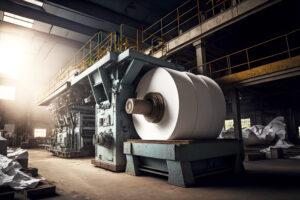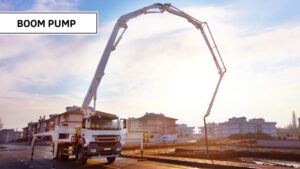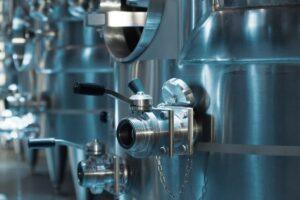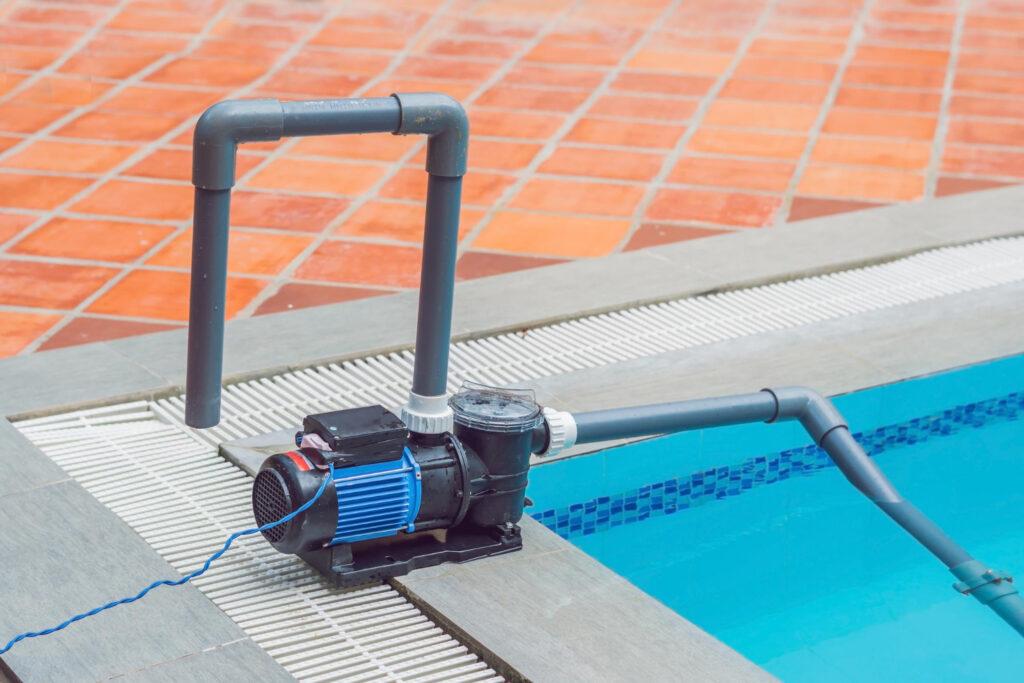
Your pool pump serves as the circulatory system, keeping water moving, clean, and chemically balanced. Choosing a pool pump requires understanding your pool’s specific needs, from volume calculations to energy efficiency considerations. The right selection saves money, prevents headaches, and ensures years of crystal-clear swimming enjoyment.
How Much Water Does Your Pool Hold?
Pool volume calculations come first. Pool pumps must move your entire water volume through the filtration system within a reasonable timeframe to maintain water quality.
Let’s see how to calculate your pool volume:
- Rectangular pools: Length × Width × Average Depth × 7.48 = Gallons
- Oval pools: Length × Width × Average Depth × 5.9 = Gallons
- Circular pools: Diameter × Diameter × Average Depth × 5.9 = Gallons
Finding average depth means measuring both shallow and deep ends, then dividing by two. A pool with a 3-foot shallow end and an 8-foot deep end has a 5.5-foot average depth.
For example, consider a 16-foot by 32-foot oval pool with a 3-foot shallow end and 7-foot deep end:
- Average depth: (3 + 7) ÷ 2 = 5 feet
- Pool volume: 16 × 32 × 5 × 5.9 = 15,104 gallons
Water should complete a full cycle every 8-10 hours. That’s the industry standard. Your pump circulates the entire pool volume through filters, heaters, and chemical dispensers within this timeframe. Faster turnover wastes energy. Slower circulation allows contaminants to build up.
But there are also additional considerations when it comes to spas, waterfalls, fountains, and heating systems. These features demand extra pool pump flow capacity. A basic 20,000-gallon pool might need a much larger pump if you add a spa and waterfall feature. Chemical distribution depends on circulation. Chlorine and other sanitizers only work when they reach every corner of your pool. Dead spots become problem areas where algae take hold and chemical imbalances develop.
Pool Pump Size Calculator: Getting the Math Right
Required flow rate calculations eliminate the confusion. Start with your pool’s total gallon capacity. Work toward the gallons per minute (GPM) rating you actually need.
The pool pump size calculator methodology uses this formula:
Pool Volume ÷ 8 Hours ÷ 60 Minutes = Required GPM
Let’s have a look at the example of an 18,000-gallon pool calculation:
18,000 ÷ 8 ÷ 60 = 38 GPM minimum requirement
Pool owners should also calculate a range. Use both 8 and 10-hour turnover periods:
- 8-hour turnover: 18,000 ÷ 8 ÷ 60 = 38 GPM
- 10-hour turnover: 18,000 ÷ 10 ÷ 60 = 30 GPM
This calculation gives you 30-38 GPM as your target range. This flexibility helps with pump selection while ensuring adequate circulation. Pool plumbing creates hard limits on flow. Pipe diameter determines these constraints:
- 1.5-inch intake lines: 42 GPM maximum
- 2-inch intake lines: 73 GPM maximum
No pump can exceed these limits, regardless of horsepower.
Most manufacturers provide pool pump size charts that match your calculated requirements to actual pump models. These charts cross-reference flow rates with horsepower ratings and head pressure specifications.
Distance affects performance significantly. Longer pipe runs, extra fittings, and elevation changes all reduce actual flow rates below what the manufacturer promises. Professional installers factor these variables into their calculations.
Which Pool Pump Type Is Right for You?
Pump technology differences affect performance, efficiency, and your long-term costs. Each type serves its specific applications.
Single-Speed Pumps
Single-speed pumps run at one fixed speed. Usually around 3,450 RPM. These workhorses dominated pools for decades because they’re simple and cost less upfront. But they guzzle electricity regardless of what your pool actually needs. Pool pump and motor construction in single-speed models uses induction motors. These generate serious heat during operation. Heat equals wasted energy. It means higher operating costs and shorter component life.
California and Arizona now ban single-speed pump sales for residential pools over 1 horsepower. Other states are following suit. These regulations exist because the energy savings potential is enormous. Single-speed pumps still make sense sometimes. Budget installations, temporary pools, or certain commercial setups. But those situations are becoming rare.

Variable-Speed Pumps
Variable-speed pumps changed everything. You can adjust speed based on what you’re doing. Routine filtration needs lower speeds, while spa demand higher flow rates. This flexibility cuts energy consumption dramatically. Permanent magnet motors make the difference. Think about electric car technology. These motors create less friction, generate less heat, and run efficiently across all speed ranges. Way different from the old induction motor approach.
The energy savings are incredible. Variable-speed pumps slash electricity usage by 70-90% compared to single-speed models. A single-speed pump might cost $1,200 yearly to operate. The same pool with a variable-speed pump runs about $300-400 annually.
Noise drops significantly, too. Lower operating speeds mean less mechanical racket. Your neighbors will appreciate the quieter operation. The enclosed motor design cuts sound transmission even more. Dual-speed pumps offer a split between high and low speed options.
What’s the Best Pool Pump Configuration?
System compatibility trumps individual component specs. Your pump has to work with filtration, heating, and sanitation equipment. Harmony matters more than horsepower.
Filter Systems
Filter flow rate compatibility is non-negotiable. Pump output cannot exceed your filter’s maximum capacity. Oversized pumps force water through filters too fast. As a result, filtration suffers, and the filter media gets damaged.
Small pool filter pump combinations need careful matching. A powerful pump with an undersized filter creates backpressure. The motor works harder, and the energy consumption jumps. Pipe sizes must align between the pump and the filter. Mismatched connections create turbulence and pressure drops. Professional installers ensure compatible connection sizes throughout the system.
Heating Equipment
Heaters add resistance to circulation. Gas, electric, and heat pump models – they all increase the total dynamic head calculations that determine pump requirements. Pool pump configuration must account for heater placement and flow needs. Heat pumps need minimum flow rates to work properly. Gas heaters require specific flow patterns for safe operation. Ignoring these requirements creates operational problems.
Additional Equipment
Salt chlorine generators, UV sterilizers, and ozonation systems all create additional resistance in your circulation system. As we discussed in the previous section regarding calculations, each component adds to the total dynamic head that affects pump selection.
Automatic pool cleaners represent another load on your circulation system. Suction-side cleaners require dedicated pump capacity, while pressure-side models need separate booster pumps in many applications.
Save Money with an Efficient Pool Pump
Operating costs matter much more than purchase price. A $400 single-speed pump looks cheap until the electric bills arrive. Variable-speed models pay for themselves within 2-3 swimming seasons through energy savings. Pool pump and motor efficiency ratings predict operational costs. ENERGY STAR-certified models meet strict EPA guidelines. These pumps often qualify for utility rebates that offset initial investment.
Real numbers tell the story. A Florida homeowner swapped a 2-horsepower single-speed pump for a variable-speed model. Annual electricity costs dropped from $1,440 to $360. That $800 yearly savings justified the higher purchase price in 18 months. Pool pump brands like Speck Pumps, known for quality and innovation over many decades, offer both fixed-speed and variable-speed models with superior energy efficiency and low-noise operation. Stick with proven manufacturers.
Environmental impact extends beyond your wallet. Reduced energy consumption cuts carbon emissions. Pool owners increasingly recognize their role in environmental stewardship through equipment choices. Maintenance costs favor variable-speed pumps, too. Lower operating speeds reduce mechanical wear. Components last longer. Many models include diagnostic features that catch problems before major failures occur. Warranties reflect manufacturer confidence. Variable-speed pumps typically include longer coverage periods.
Can You Install Your Pool Pump Yourself?
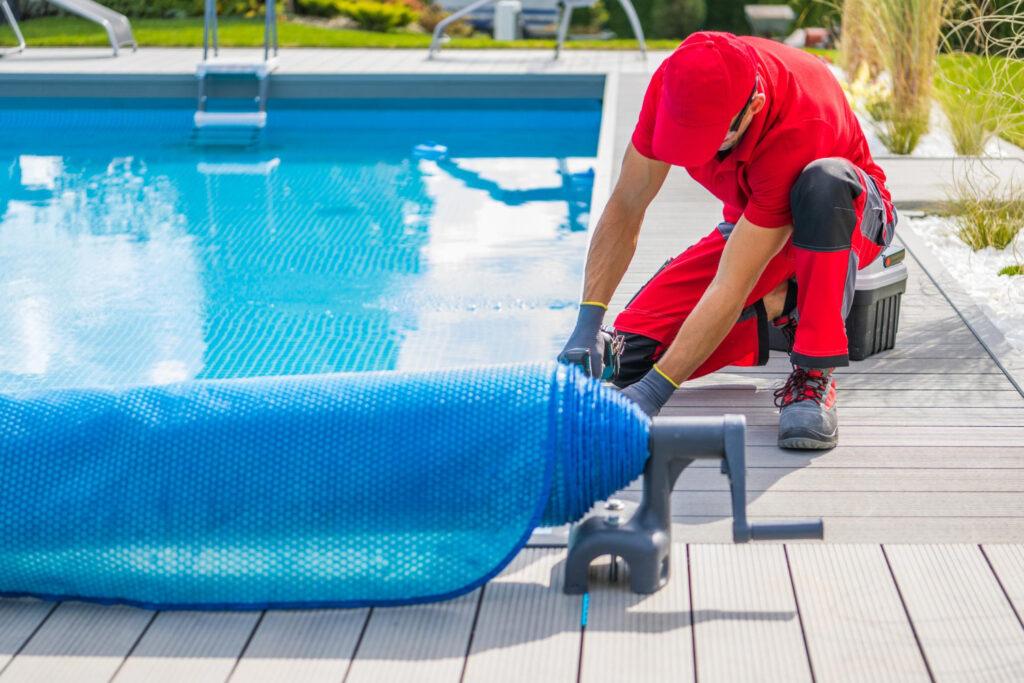
Electrical requirements for new pool pump installations often exceed DIY capabilities. Variable-speed pumps need dedicated 220-volt circuits with specific amperage ratings. Local codes mandate GFCI protection and proper grounding for all pool equipment.
Pool pump configuration involves much more than connecting pipes and wires. Pump priming procedures, system startup sequences, and initial programming all require technical knowledge that most homeowners lack. Get these steps wrong and you void warranties while creating safety hazards.
Professional installers understand local building codes and permit requirements, which vary significantly by jurisdiction. Many areas require electrical and plumbing permits for pump replacements, especially when upgrading from single-speed to variable-speed models. Pump placement affects both performance and longevity, too. Proper ventilation prevents motor overheating, while weather protection extends equipment life. Service access must allow routine maintenance without major disassembly.
Pump services extend far beyond installation to include ongoing maintenance and troubleshooting. Professional technicians optimize pump programming for seasonal changes and adjust settings based on specific usage patterns. Warranty protection strongly favors professional installation. Many manufacturers require licensed contractor installation to honor warranty claims, leaving DIY failures as the homeowner’s financial responsibility.
Why Partner with AMED-US for Your Pool Pump
Successfully determining how to choose a pool pump requires balancing multiple factors: pool size, energy efficiency, system compatibility, and long-term costs. Everything we’ve covered in this article provides the foundation for making smart decisions.
From initial consultation through installation, programming, and ongoing maintenance, we provide complete support for your pool’s circulatory system. Our industrial equipment expertise translates directly to superior pool system performance, ensuring years of trouble-free operation and optimal energy efficiency. Contact AMED-US today for expert guidance on selecting and installing the perfect pool pump for your specific needs.






